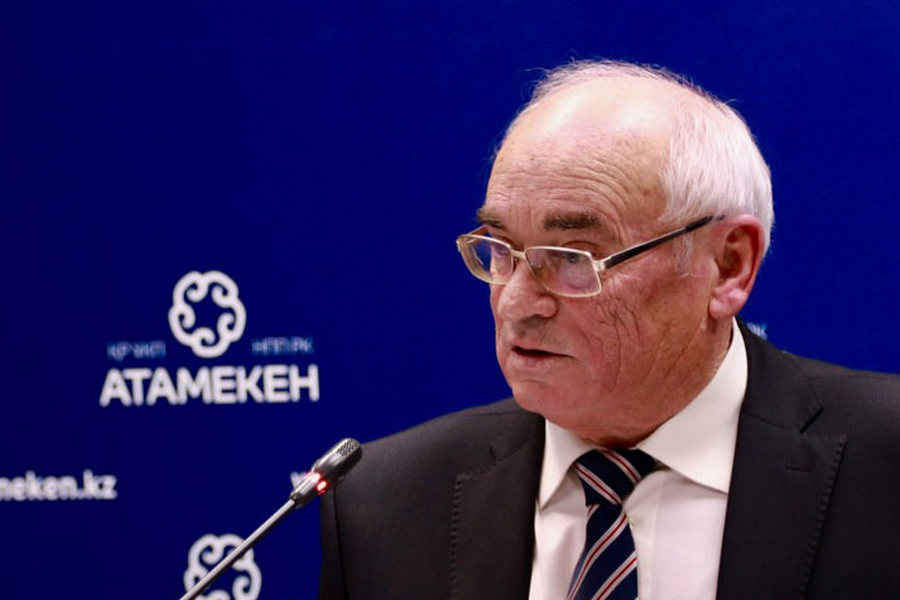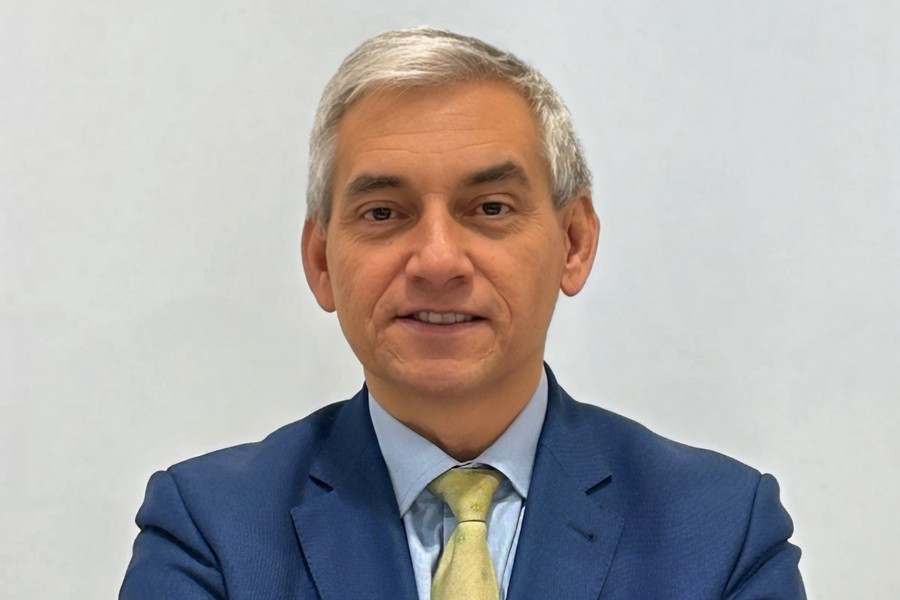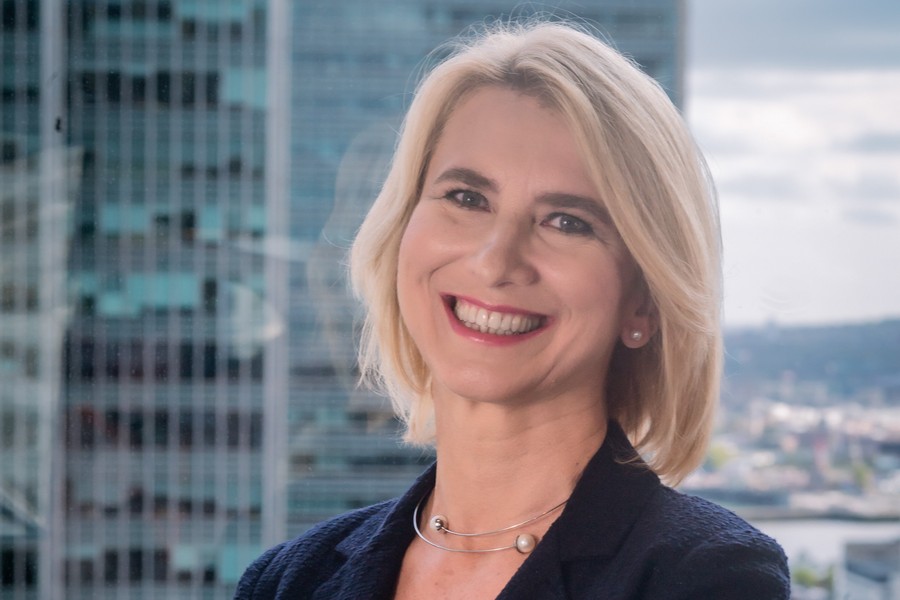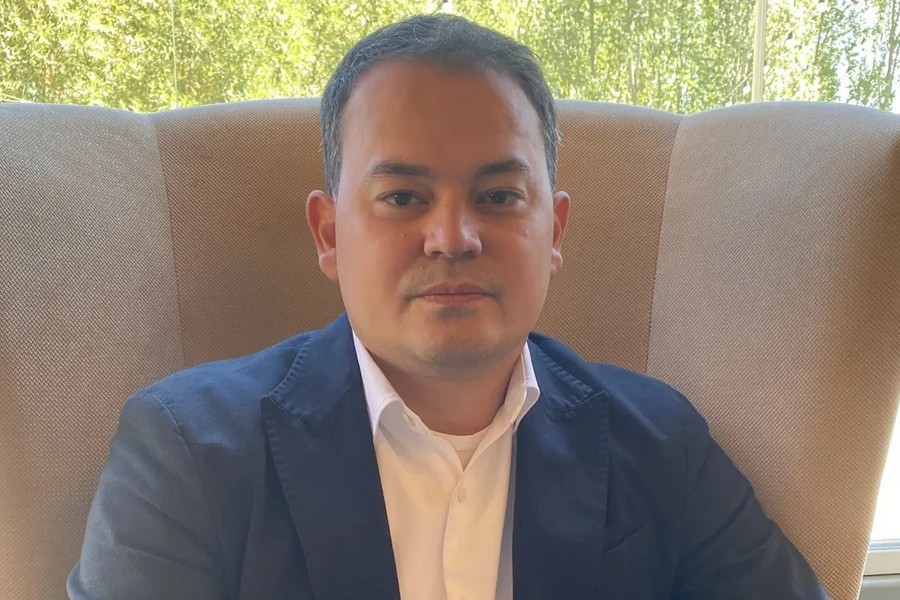Yernar ZHANADIL, Managing Director for Development and Privatization at Samruk-Kazyna JSC:
THE OIL PRICE FALL AND CPC INSTABILITY WERE TAKEN INTO ACCOUNT WHEN THE PRICE OF KAZMUNAYGAS SHARES WERE FORMED FOR IPO
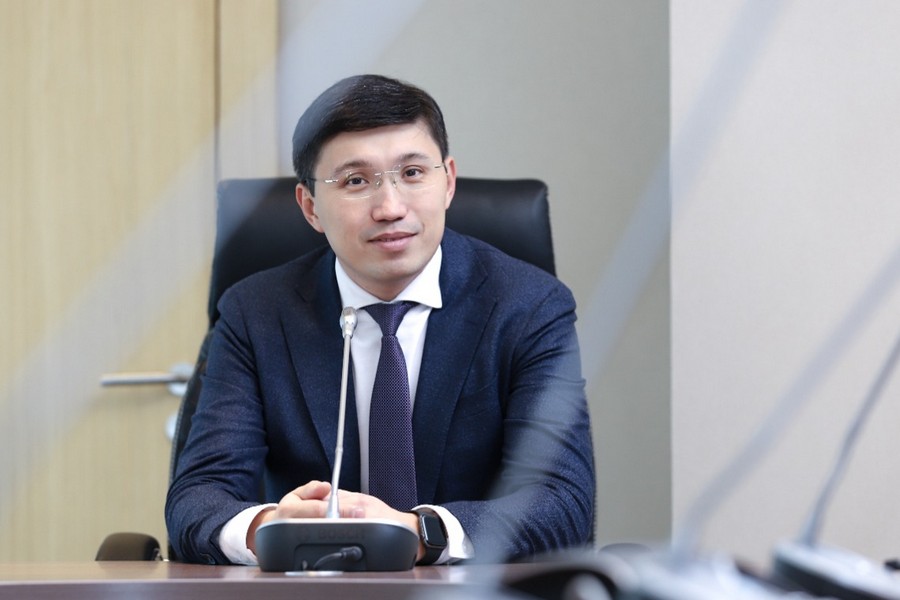
The stock market of Kazakhstan is awaiting the largest national oil company’s IPO against the backdrop of the difficult geopolitical situation and global economic recession. Yernar ZHANADIL, Managing Director for Development and Privatization at Samruk-Kazyna JSC, talked in an interview with Interfax-Kazakhstan about KazMunayGas’ evaluation process, possible risks, mechanisms for equal access by individuals to the participation in the IPO.
- Yernar Beisenuly, what are parameters for the placement of KazMunayGas shares and what are deadlines?
- Fund Samruk-Kazyna offers households more than 30 million shares of KazMunayGas (KMG), or approximately 5% of the total number of issued and authorized shares. The cost of one share will be 8,406 tenge (467.99 tenge/$1). We have already started accepting bids since November 9, this will last until November 30 for institutional investors, and until December 2, 15:00 Astana time, for retail investors.
- The selling price of one share amounts to 8,406 tenge. How was this price formed? And who did the evaluation?
- We thoroughly approached this issue, since the country had not conducted an IPO on this scale for a long time. KMG is a very large company for the local stock market, so we decided to involve an evaluation company, consultants and investment banks themselves. It was important for us to introduce the teams of the investment banks to all oil and gas business details. We spent several weeks with them, talking through all aspects of KMG's activities, explaining each element of the financial model. We definitely spent three weeks with them, but in general, allocated nearly two months for the evaluation process.
The work was carried out thoroughly, which subsequently was reflected within provisionally the same band of KMG's business market value evaluations for all the 6 investment banks: these are 4 local and 2 international ones.
To this end it should be understood that any initial placement implies a certain discount, at least because in the case of KMG, non-controlling interest is for sale. Accordingly, the investment banks jointly created several scenarios depending on the value of one share, given various discount amounts, and potential demand matching each option of the cost of one share.
All scenarios were submitted at the level of the state commission, and the top managers deeply immersed themselves in all the calculations submitted. The investment bankers said that if they entered the market according to the scenario with the smallest discount, then the market capacity would be insignificant, and they would focus on institutional investors. But since it was important, in the first instance, to offer KMG’s shares to the citizens of the country, the government accepted the recommendation of the investment banks to expand the discount size. Looking back, I can say that the process itself was thorough, consistent and transparent enough.
- Analysts say that the share price is too high, given the risks of falling oil prices and CPC problems. Were these risks taken into account at the time of pricing?
- Yes, all these risks were taken into account, of course. As for oil prices, this is an external factor that does not entirely depend on the company, because KMG does not play such a significant role in global production. Therefore, it is impossible to say that they can somehow influence or control that. Nevertheless, when the value of KMG’s shares was being determined the moderately conservative outlook for oil prices was put in the financial model.
As for the CPC (Caspian Pipeline Consortium), this was also put in the cost evaluation using the risk premium indicator. But as for CPC, the problem was standard: like any equipment, like any asset, the single point moorings, which are needed for loading oil onto tankers, require repairs from time to time. These repairs should have been carried out some time ago, but were postponed for one reason or another. As a result, natural phenomena in the form of a storm put one facility out of action, and the second one, a backup, also stopped for repairs. But due to the lack of information, the general public, including investors, began to link occurred operational risks with geopolitical events. Given that the single point moorings, has been repaired and put back into service, and oil is being loaded in full, we understand that the operational risk has been mitigated and, in principle, there should be no other problems with the single point moorings in the foreseeable future.
- A significant part of oil supplies passes through Russia. Was this taken into account when the shares were priced?
- This was taken into account through the country risk, risk premium. But at the same time, I want to note that the CPC, which is running through the territory of the Russian Federation and through which Kazakh oil is supplied, is a good asset for all parties and shareholders, including the Russians. Russia, in addition to dividends from the asset itself, also receives payments for oil passing through its territory. In fact, no one has an interest in the non-operating CPC.
It is clear that KMG, as part of its corporate risk management system, is obliged to take into account all possible risks and consider mitigation measures, including alternative routes, if we are talking about logistics risks. There is a route to China with an existing pipeline with a throughput of 20 million tonnes a year. There is a Trans-Caspian route through Azerbaijan, and certain progress has already been made in this direction. But it should also be noted that at the moment, there is no good alternative to the CPC, because more than 60 million tonnes of Kazakh oil are transported through this pipeline, and it will take some time to redeploy these volumes of oil to other routes. But again, everyone understands that the properly operating CPC in the interest of all parties.
- The question most frequently asked by retail investors is how much can one earn from KMG's IPO? It is clear that no one can name exact percentage, moreover, there are no guarantees of future profits. But still, how can the history of KMG be of interest to a potential investor?
- You rightly say that no one can say that. At the same time, we offer households the largest national oil and gas company in the country, which has good assets in the form of stakes in megaprojects, such as Tengizchevroil (TCO), Kashagan, Karachaganak. All of these assets have good prospects. In particular, TCO’s future growth project almost nears its completion, which will lead to an increase of additional 12 million tonnes a year in oil production. This will provide for a good influx of additional dividends by 2025. The fund together with KMG also completed a deal to buy back a 50% stake in KMG Kashagan BV, which allowed KMG to increase its stake in the Kashagan project itself to 16.88%. By the way, KMG will pay for the repurchased stake with money of the Kashagan project itself, and without using its corporate cash flows, something what is a very favorable deal for KMG in the run up to the IPO.
As for the other growth points, these are, of course, new areas of petrochemicals. Recently, a large plant to produce 500,000 tonnes of polypropylene was put into operation. In the long term we will move on polyethylene and butadiene projects. These are products involving the next processing stage, more cost-effective, more complex; products that will create their own industry and ecosystem around themselves making all along products of the third, fourth processing stages for end consumers. All this is KMG’s investment history and is offered to households.
- What will be the amount of guaranteed dividends per ordinary share?
- We undertook a commitment to pay the minimum guaranteed amount of dividends in the range of 200-250 billion tenge. It turns out that about 327-409 tenge per ordinary share.
But it should be noted that the amount of dividends may be higher. For example, if the company, according to the dividend policy, corresponds to good values in terms of debt load, then the amount of dividends will be adjusted upwards. In general, the fund also has an intention to receive more dividends from KMG as a main shareholder.
- Many potential investors are perplexed by the stipulation in the issue prospectus that guaranteed dividends will be paid only if oil prices are no less than $70. Given the global economic recession, oil prices could fall well below this mark. What can you say to this end?
- Firstly, it is about the average annual price. Secondly, even if oil prices fall somewhere, we believe that this will be in the short term, and it should recover relatively quickly, in principle. You know, when Kazatomprom went to IPO, there was approximately the same stipulation. But on Kazatomprom, the actual dividends exceeded the declared minimum guaranteed amount from the prospectus. Therefore, we do not expect big risks, but the investment bankers themselves insisted on leaving this stipulation in the prospectus, following Kazatomprom’s suit. Moreover, the three years stated in the prospectus are in fact not a kind of long-term horizon equal to decades.
But even, let’s say, hypothetically, if something happens that will limit KMG, as a fund we will do our best to pay dividends to minority shareholders, since we want to be consistent in our statements. We will yet have several IPOs for key companies: Air Astana, Samruk-Energy, KEGOC, KTZ and QazaqGaz. Therefore, if we want to raise the stock market in Kazakhstan at all, if we want to be consistent in our plans to list national companies, then we will definitely have to pay dividends within the next three years.
- As you know, now in Kazakhstan the tenge deposits rates in large banks are up to 15%. Please, tell us why an investor should invest in KMG shares, which, according to various estimates, will be rewarded at 5% per annum, rather than in the very deposits, for example?
- I'll probably name two basic reasons. First of all, the company has a good portfolio of assets, which will continue to grow. The company has new assets that create a new sector, more complex, and they will also be profitable. The very polypropylene, future polyethylene, for example, and so on. Therefore, we are selling here not just history, when the company will only extract oil from subsoil, sell it and deliver dividends. And we will sell history when the company will further develop other areas. The second main reason is deposits in tenge, while the company's revenue is mostly denominated in hard currencies. It is clear that there is transportation, revenues of oil refineries, which are denominated in tenge, but most of their revenues from the sale of crude oil, from the dividends of TCO, Kashagan, Karachaganak, Mangistaumunaigas. That is, in case of tenge depreciation, potentially KMG’s dividends will only grow. Therefore, if we already compare it with deposit rateы, then it is better to take dollar-denominated deposits.
- In accordance with the government decree Samruk-Kazyna is entitled to sell almost 16% of the total stake in KMG, of which about 5% will now be offered. Do you plan to have an SPO or listing of KMG on foreign exchanges in the future?
- We want to consider in general, of course, the international stock markets in the future. The fact that we went along with such a volume, which is $550 million in absolute terms, is actually quite a lot for local offering only in terms of liquidity. But in order to increase securities liquidity to a good level, it is still important to place in the foreign markets as well. But right now, we are fully focusing on IPOs on local exchanges.
- Tell us about limits for retail investors. What volume of their bids to buy shares can be accepted? There are fears in society that a local IPO could turn into a buyout of shares by oligarchs. What are mechanisms for equal access to the participation in an IPO and the purchase of shares? With which shareholding percentage is a minority shareholder required to disclose information about an acquisition? Is there any priority for those who bid for less than 10 shares?
- There is an instruction from the government that we, first of all, satisfy the needs of individuals, the citizens of the country. There are no separate tasks how to distribute in-house. We conducted an analysis of the market capacity together with banks, the proposed 5% will completely cover the needs of the current stock market.
So, having said this I do not think that the scenario of some kind of grab by one person is practically feasible; 5% of the shares is $550 million, and therefore, this must be a very rich person who would immediately shell out a significant part of the specified $550 million. But even in this case, the government and the fund have every right to adjust and, if required, completely cancel bidding during the allocation process. The most important term is priority for the citizens of the country. We must fully cover their needs. Institutional and international investors will go only thereafter based on the residual principle.
- That is, one can buy even one ordinary share?
- One can buy one ordinary share, and we even urge so, because the more minority investors, shareholders, the better for the company in terms of corporate governance, and, in general, for the domestic stock market development. Moreover, the fund has other national companies in line for IPOs.
- The state is not always a good business manager. The issue that worries investors is that the government may commission the construction of a project without assessing the risks and which in the end may be unprofitable. Tell us how such decisions are made both by the fund and KMG and are there any guarantees that the company will not invest in projects with a high payback risk?
- You are absolutely right about the state being not the best business owner. Therefore, we believe in the idea of privatization and IPOs for large companies. Therefore, we also consider that the presence of minority shareholders, on the contrary, would likely help set the company right tasks.
It is necessary to look at what projects hereto we are talking about. For example, if we talk about the construction of a water pipeline, which has been so often mentioned lately, then it, in itself, should not be super profitable business with a large margin. What is the pipeline for? To supply KMG’s projects with water. Therefore, when any individual investor starts looking at a company based on short-term objectives, this is bad, because in the long term, without investing in infrastructure, e. g. a water pipeline, it will be impossible to keep up oil required production volumes or supply petrochemical projects with necessary water. But here, too, the task of the company is to explain, provide bona fide communication for investors. Here, of course, it is necessary to fully streamline work processes in national companies.
But I agree that there may be such projects when the top management considers options for building, say, a museum or a stadium that are not related to the company's activities. Let’s suppose, such projects are not included in the pool of projects within the framework of the company's social responsibility, while minority shareholders should say their weighty "but".
- And how will minority shareholders protect their interests, because it is possible to appoint a [company’] own representative to the board of directors with a 10% stake or more?
- A good question. But let's take Kazatomprom as an example. They hold 25% now on the exchange. Minority investors didn't choose or nominate anyone because by definition it's hard enough for all minority investors to get together and nominate one or two people. Kazatomprom is a success case. Moreover, the case is not just of Kazakh listing, but international listing too. And in this case, we have long had established procedures for the selection of independent directors. I do not think that any of them will risk their reputation for the sake of some short-term effect. Therefore, reputation lies at the basis, all independent directors will in fact fully defend the opinion of minority investors.
- What company will you see in 5-10 years?
- The company approved its strategy just last year. In accordance with this strategy, we say that the company must be financially successful, technologically advanced, flexible, in order, firstly, to ensure a good cash flow, as well as respond to global challenges. But in general, the company must be vertically integrated, must carry out downstream, midstream, upstream operations. That is, it must produce, explore well new areas in order to replenish its oil reserves, and must actively engage in transportation and processing and at the same time develop those areas of petrochemical industry I mentioned. When a company is so vertically integrated, it will be really sustainable.
- Thank you for the interview!
November, 2022
© 2025 Interfax-Kazakhstan news agency
Copying and use of these materials without reference to the source is prohibited
Archive

